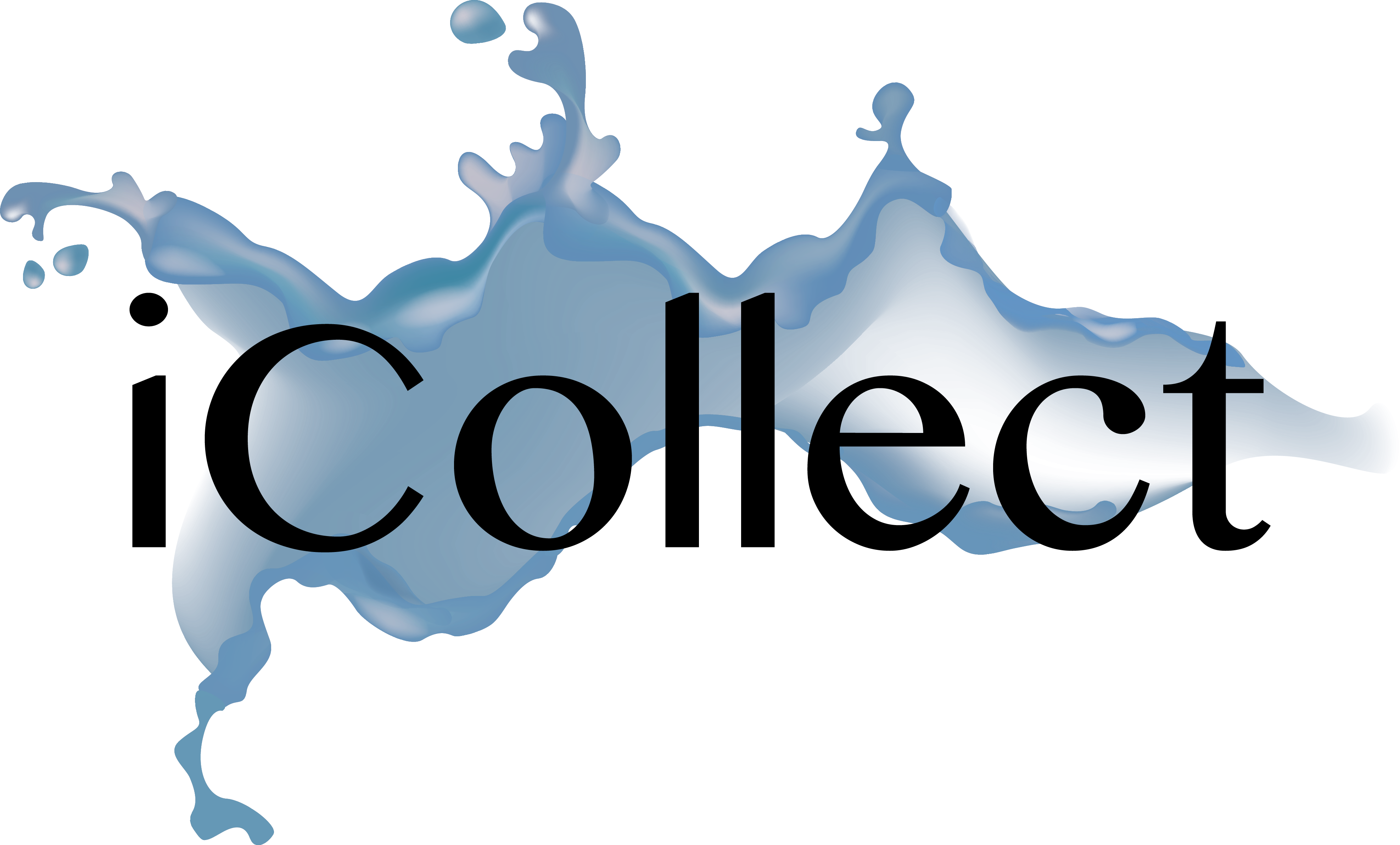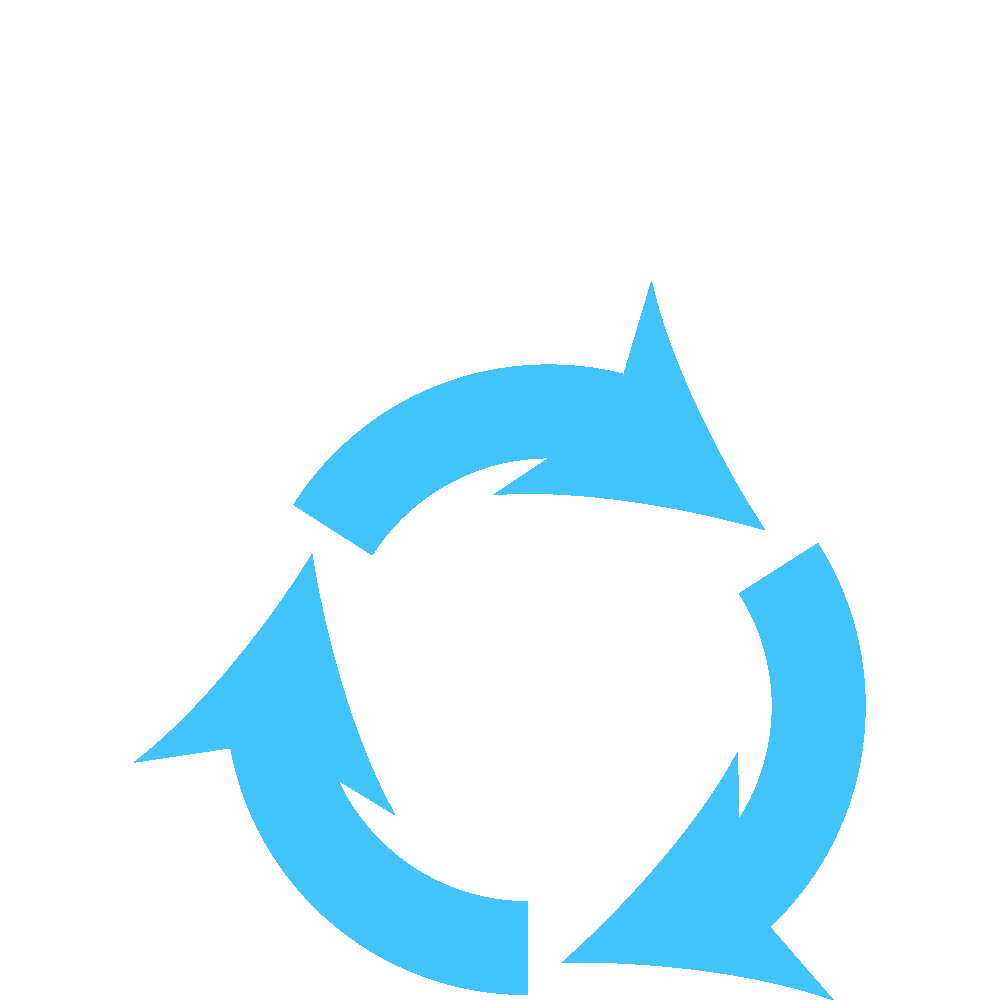ICOLLECT PROJECT
Our philosophy is to create, to the largest extent, a self-sustained cycle in which the parts integrate and solve a number of today’s major problems.
The marine plastic pollution is a global problem and must be solved in collaboration.
We need to create a cycle where we combine heart and soul with true commitment, but also with economical numbers to promote long term sustainable commercial operations.
To make a system where we can price the problem and its solution. In order to create a sustainable change it has to be a part of our daily lives, and also on commercial terms.
Real Example
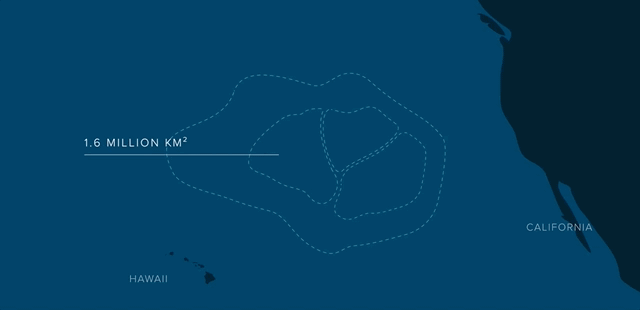
Tons of plastic, totalling 1.8 trillion plastic pieces floating in the patch.
There are so many facts that clearly show what is happening and how the plastic pollution is influencing the sea environment. Under the surface, where a lot of plastic waste has already sunken to, we still know very little of the effects.
We do know now that micro-plastic is moving into the oceanic food chain. And that it will also therefore start to influence the human food chain. No-one knows the exact impact of this yet, but we all realise that we are moving in a very dangerous direction.
Plastic does not degrade, instead it takes hundreds of years to break down and never really disappears. It poses a significant health threat to various sea creatures, and to the entire marine ecosystem. People get contaminated easily by eating contaminated seafood that can cause serious health problems, from cancer to severe damage to a persons immune system.
The economic loss and damage caused to everything from the fishing industry and tourism, as well as harbours and the economical chain follows.
Tragic Facts
> There are over 46,000 pieces of plastic floating in each square mile of ocean just off the coast of the United States, which, only in this area, contributes to the death of 100,000 marine mammals and 2 millions sea birds yearly. This island of garbage -The Great Pacific Garbage Patch, is twice the size of Texas.
> In total, 850 million cubic meters of liquid and solid wastes have been dumped into the oceans in the past 85 years. Plastic accounts for approximately 90 percent of all trash floating on the surface today. The United Nations Environment Programme (UNEP) estimates that every square kilometre of the ocean contains approximately 17,760 pieces of plastic (46,000 pieces per square mile).
> The ocean pollution affects more than 817 animal species around the world, a figure that has increased 23% in the last 5 years. The frequency of impacts varies according to the type of debris where over 80% were associated with plastic debris while paper, glass and metal accounted for less than 2%. It is estimated that fishes ingest between 12,000 to 24,000 tons of plastic per year only in the Pacific Ocean.
> Studies have also shown that about 700 species have encountered marine debris, and 92% of these interactions are with plastic. 17% of the species affected by plastic are on the IUCN (International Union for Conservation of Nature) Red List of Threatened Species.
PacMan fleet
PacMan fleet is a self-sustained ship that can collect plastic waste in the seas and oceans. The waste is treated onboard and turned into energy.
The PacMan Design
The PacMan fleet will collect plastic from areas with high-density pollution, sort it and recycle it onboard by using our own waste-to-energy treatment system. The energy produced from the recycling process will be stored in the form of compressed air. Our compressed air system converts the energy into 100% clean fuel ready to be used by generators and engines powering the whole boat’s machinery.
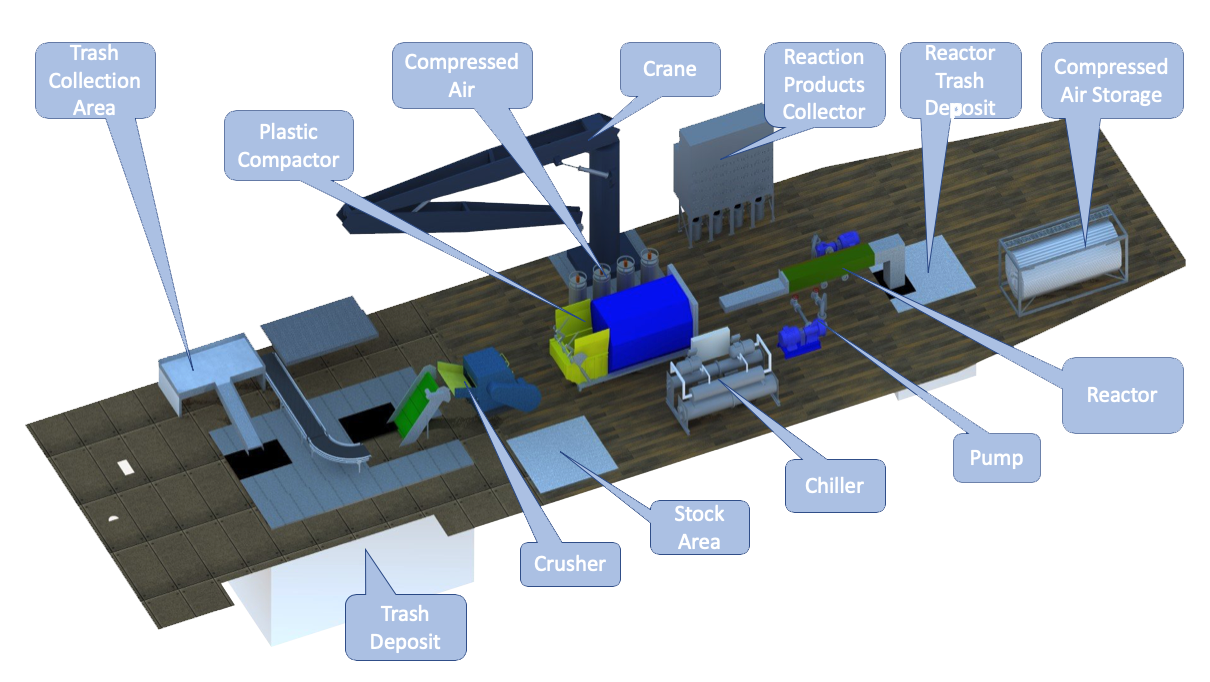
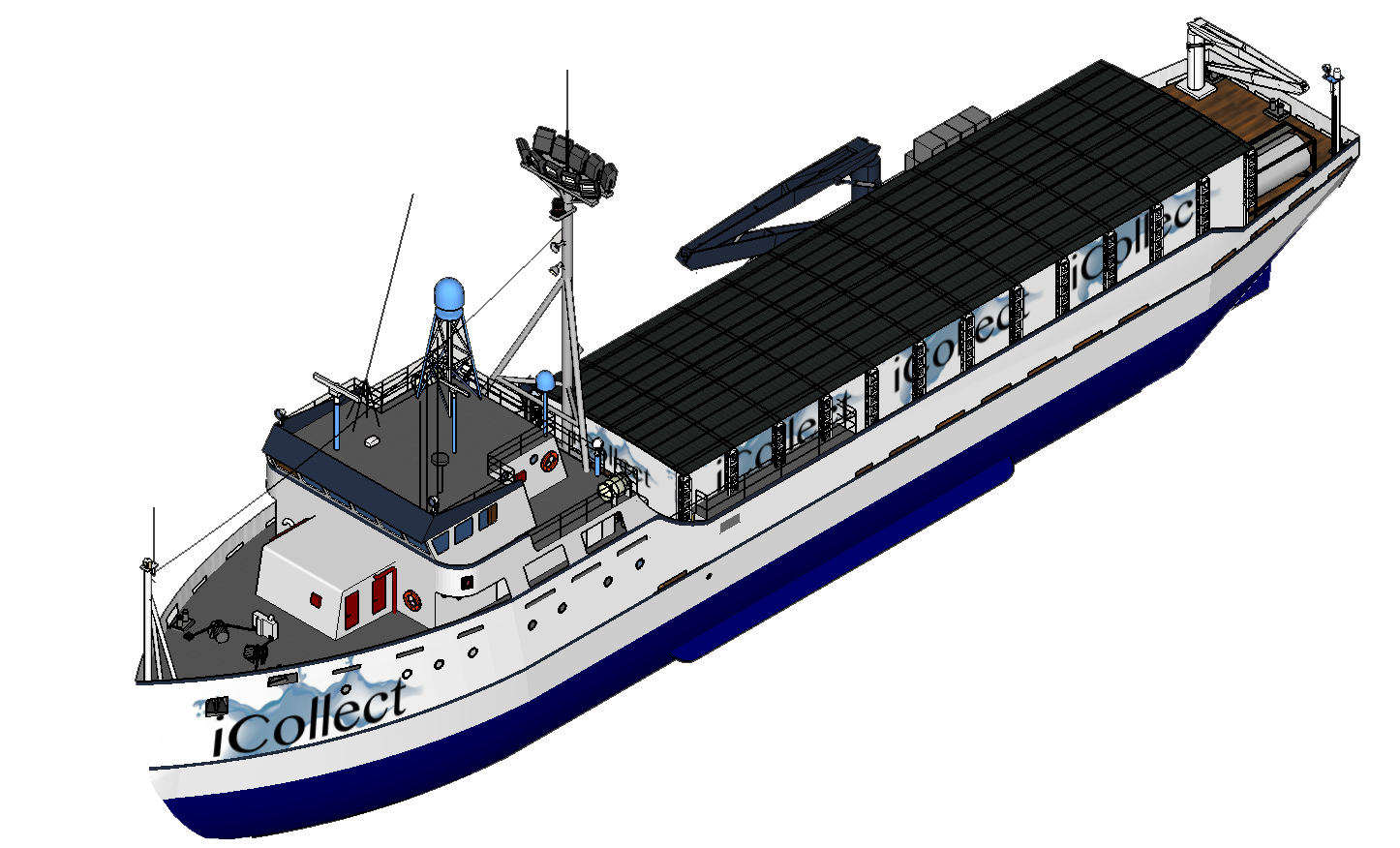
The PacMan Process
The PacMan fleet will have a standardized protocol to approach the plastic waste in order to perform the maneuver in the most sustainable way. During navigation hours and plastic collection, there will be a team of observers & researchers on board following the protocols developed by marine biologists and environmental scientists to ensure no damage is being made to marine wildlife while developing highly valuable scientific research. Moreover, engineering research will be going on at each PacMan to continue developing high quality technology for marine applications such as clean air engines in a maritime environment.
The PacMan works in 4 steps:
1. Collection
Pick up the plastic from the ocean (following environmental protocol to avoid damage of marine species);
02. Pre-treatment of waste
Sorting and separating waste types, drying and pressing;
3. Destroy waste
Using innovative clean waste to energy technology, plastics will be destroyed (secure, efficient, and environmentally friendly);
4. Generate energy
Waste destruction will generate energy – energy to run engines, generators and treatment chambers, ie. energy for PacMan to operate. The output of the recycled and treated plastic can be utilized both as biofuel or compressed air;
Collect
Recover the plastic from the ocean avoiding wildlife being harmed in the process.
Pre-treatment of Waste
The waste will be dried and separated into its different types
Recycle Waste
Innovative technology will recycle the plastics in the most secure, efficient and environmentally friendly way
Generate Energy
During waste destruction, energy will be generated and together with solar panels it will be used by PacMan boats during the operation
The PacMan Implementation
The basis of the PacMan fleet is to transform old boats that used to provide other services into PacMan boats. We are designing the system so it is possible to build it on any ship with large open spaces with an estimated refurbishment of 3-6 months to get the ships operational. This is done to achieve both implementation speed and financial gains. The system is modular and also should be easy to replicate.
Approach and Plan
The first two PacMan ships are under construction for stating operations during summer 2019. The ships will be fully operational in collecting and treating the plastic waste but, will also function as an R&D/optimization and communication platforms for raising support in reversing the global plastic situation. They will be visible and present in most major costal and marine events, to create and raise awareness of both the PacMan movement and our partners.
After PacMan 1 and PacMan 2 our idea is to keep increasing the fleet with bigger and larger boats in order to have more storage capacity and will start collecting plastic from each of the five garbage patches. Starting in 2021 we want to implement the major step in our PacMan fleet to include 5 tanker chips which will be stations in an ocean gyre in order to work as a main treatment center.
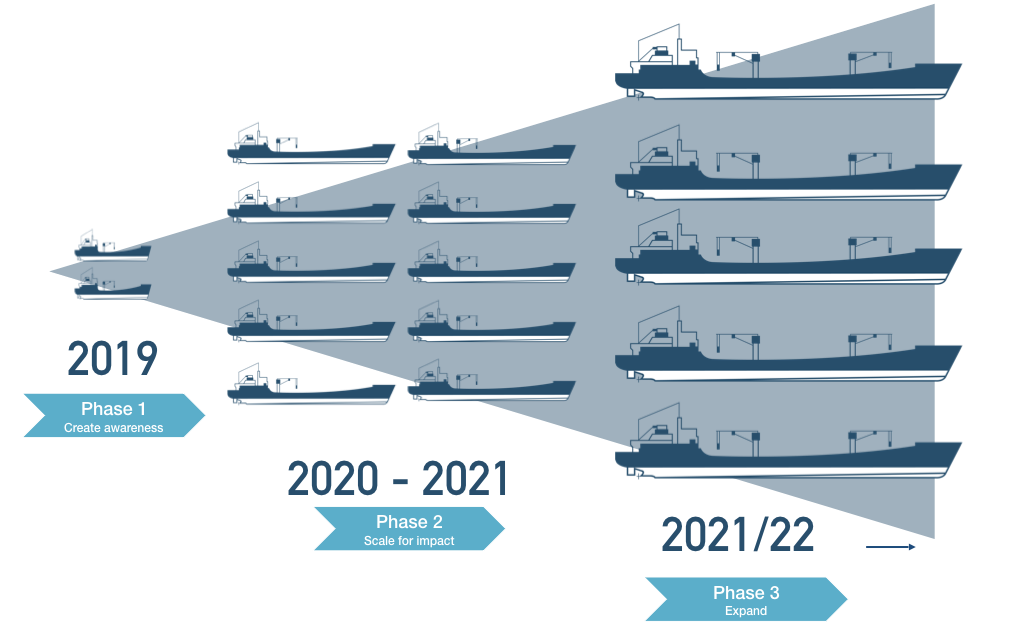
Phase 1: Creating Awareness
PacMac1, will tour the Mediterranean and other European harbors as far up as the Baltic sea during summer time. It will collect plastic and reduce its concentration, but also create awareness and visibility for iCollect and our sponsors and partners. PacMan1 aims to attend all major events, in coastal cities and on islands. In these locations PacMan1 also becomes a platform for our sponsors to host events for promoting their work and participation in the fight against pollution.
PacMan 1 shall also be a brand feature to be used for our partners’ communication regarding their sustainability efforts in different locations. The aim is to create a positive return value back to our sponsors, both in form of visibility but also sharing the results of research and progress.
The Mediterranean Sea, today presented as one of the seas with the highest levels of plastic pollution worldwide, plastics account for 95% of the waste in the Mediterranean’s open waters, seabed and beaches. The Mediterranean is now considered to be the sixth biggest area of marine litter accumulation. The Mediterranean Sea will therefore be the first area of implementation.
During wintertime we will do the same but across the Atlantic Ocean, mainly in the Caribbean.

PacMan 2 will be stationed out of Hong Kong (China). As Asia is one of the biggest sources of plastic pollution worldwide, this is our second area of priority to start this coming year. Due to a rapidly growing population and the vast number of rivers, the Asian coasts are producing more than 10 000 metric tons of plastic waste per year. This is a large source of waste ending up in the oceans.
PacMan2 will, in the same way as PacMan 1, be used both for collection and treatment and for participation in major relevant events.

Phase 2: Scale for Impact
Based on data and experience from PacMan 1&2, the second phase of PacMan boats will operate on improved technology and perform specific protocols for the new areas. With greater capacity, our technology will then be adapted and installed into 10 new boats. These boats will be bigger in size being able to collect, store and recycle a greater amount of plastic. They will increase the efficiency of the PacMan fleet and also accelerate the payment of the plastic debt.
These new 10 PacMan boats will be solely industrial and will extend the operation areas:
• 2 serving support to PacMan 1 in Europe and PacMan 2 in Asia;
• 1 more in the areas around Indonesia;
• 1 in the Caribbean Islands;
• 1 based out of Hawaii;
• 1 to each principal gyre, to start attacking them and collecting data for Phase 3;
Phase 3: Expand
The 5 PacMan tankers, sent to each of the big ocean gyres, will stay in situ at all times. Smaller ships (feeders) will collect the plastic from the ocean’s surface and transport it to the big tanker ships for fully effective recycling of the waste and storage of the energy as compressed air.
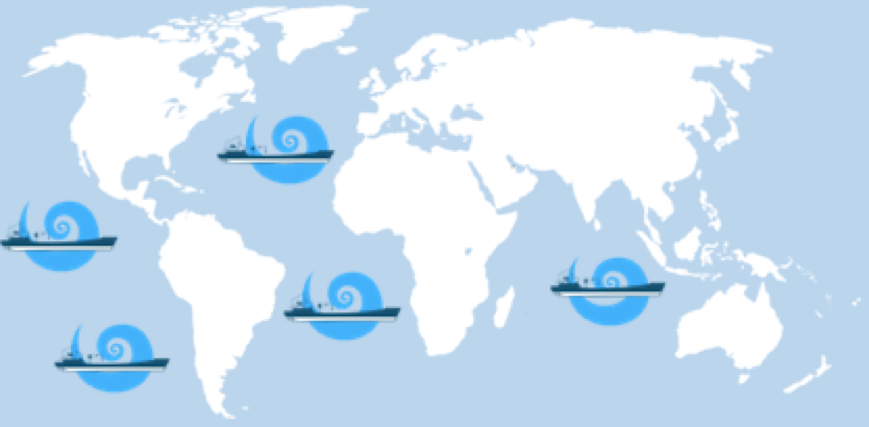
Each tanker will produce much more energy than it consumes and will therefore produce different residuals in form of energy as compressed air and possibly biofuel, as well as plastic pellets for recycling purposes.
The compressed air energy will be sold to small neighbouring islands to replace polluting diesel generated power. Medium sized boats will transport tanks of compressed air to the islands, and simultaneously function as support/supply ships for the operation. This will create a circular multipurpose structure benefiting the island through cheaper and cleaner energy, as well as creating value to the plastic collection operation.
The fleet will be expanded in each gyre until we get high impact and high reduction rate of plastic.
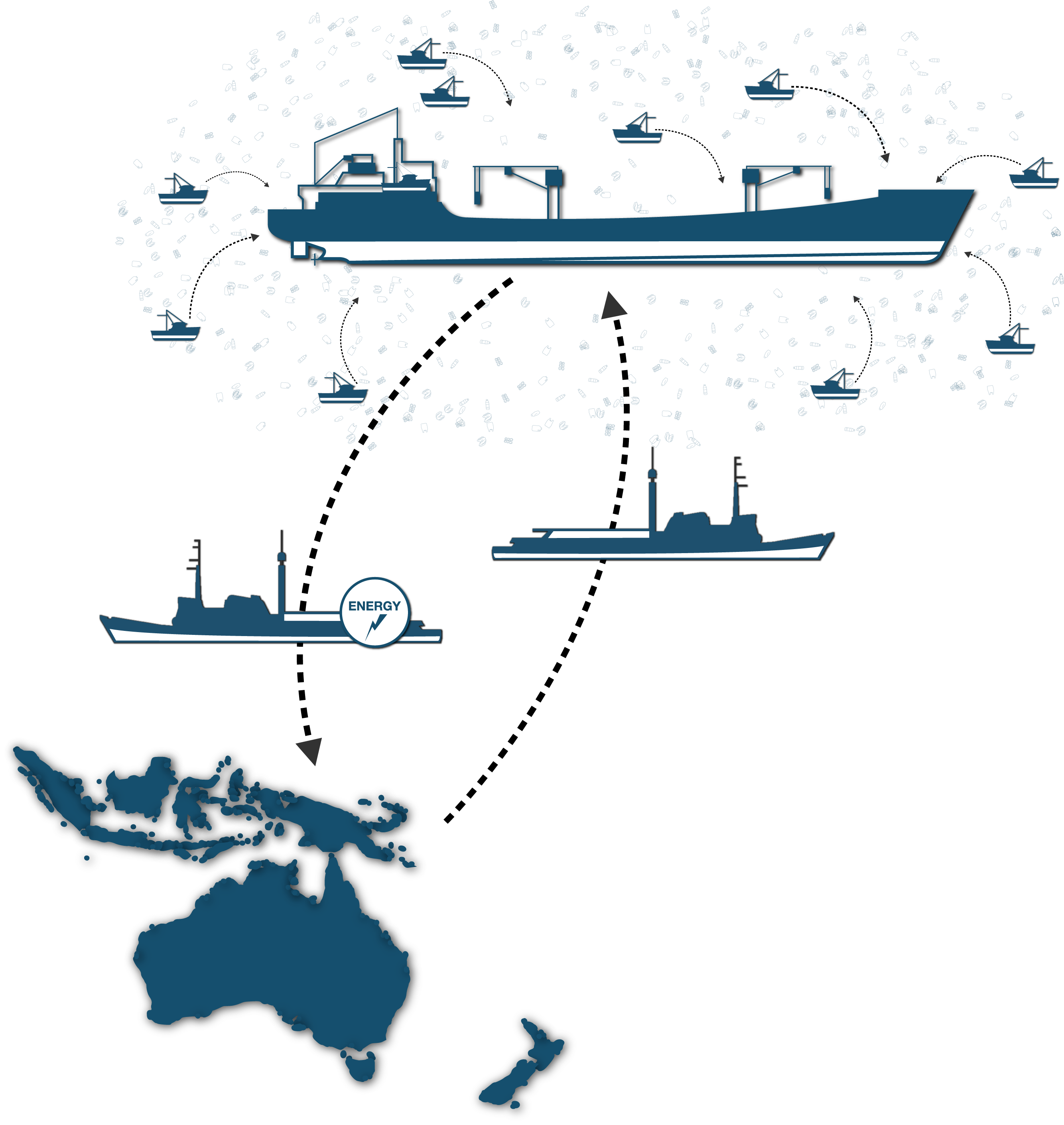
PacMan in the Future
The ship, whose main purpose is collecting waste at sea and transforming it to energy, can also become a collection center for larger ships that cannot dispose of their waste in smaller ports or that want to unload their accumulated waste during navigation.
Helping the sea breathe by eliminating harmful waste from the marine ecosystem is our first goal, but platforms to facilitate the disposal of waste from recreative and non-recreative vessels have to be developed, as well as waste collection where it does not exist today.
The technology used in the PacMan fleet can be extended to any kind of ship by installing the recycling waste to energy plant on them. This can have positive impacts in the near future as this would mean that big ships, such as cargo ships, could use their own waste to run the boat’s engines without having to use fuel and therefore reducing the impact on the marine environment.
blockchain solution
A blockchain solution would help to prevent a misuse of the system, in order to keep its recourses and focus on the people that are collecting.
A blockchain is a public ledger of information collected through a network that sits on top of the internet.
The transparency of a blockchain stems from the fact that the holdings and transactions of each public address are open to viewing. Using an explorer, and equipped with a user’s public address, it is possible to view their holdings and the transactions that they have carried out.
This level of transparency has not existed before, and adds a degree of accountability that has not existed to date. Once the data is recorded in a block it cannot be altered without having to change every block that came after it, making it impossible to do so without it being seen by the other participants on the network.
Distributed ledgers have 3 key attributes:

> The culture of recycling;
>Do not disperse in the sea, which is more harmful than to disperse at home;
> Stop the pollution of the coasts and oceans;
> Energy development of waste;
> The culture of recycling;
>Do not disperse in the sea, which is more harmful than to disperse at home;
> Stop the pollution of the coasts and oceans;
> Energy development of waste;
The PacMan Design
The PacMan fleet will collect plastic from areas with high-density pollution, sort it and recycle it onboard by using our own waste-to-energy treatment system. The energy produced from the recycling process will be stored in the form of compressed air. Our compressed air system converts the energy into 100% clean fuel ready to be used by generators and engines powering the whole boat’s machinery.
The PacMan Design
The PacMan fleet will collect plastic from areas with high-density pollution, sort it and recycle it onboard by using our own waste-to-energy treatment system. The energy produced from the recycling process will be stored in the form of compressed air. Our compressed air system converts the energy into 100% clean fuel ready to be used by generators and engines powering the whole boat’s machinery.
Approach and Plan
The first two PacMan ships are under construction for stating operations during summer 2019. The ships will be fully operational in collecting and treating the plastic waste but, will also function as an R&D/optimization and communication platforms for raising support in reversing the global plastic situation. They will be visible and present in most major costal and marine events, to create and raise awareness of both the PacMan movement and our partners.
After PacMan 1 and PacMan 2 our idea is to keep increasing the fleet with bigger and larger boats in order to have more storage capacity and will start collecting plastic from each of the five garbage patches. Starting in 2021 we want to implement the major step in our PacMan fleet to include 5 tanker chips which will be stations in an ocean gyre in order to work as a main treatment center.
Approach and Plan
The first two PacMan ships are under construction for stating operations during summer 2019. The ships will be fully operational in collecting and treating the plastic waste but, will also function as an R&D/optimization and communication platforms for raising support in reversing the global plastic situation. They will be visible and present in most major costal and marine events, to create and raise awareness of both the PacMan movement and our partners.
After PacMan 1 and PacMan 2 our idea is to keep increasing the fleet with bigger and larger boats in order to have more storage capacity and will start collecting plastic from each of the five garbage patches. Starting in 2021 we want to implement the major step in our PacMan fleet to include 5 tanker chips which will be stations in an ocean gyre in order to work as a main treatment center.
Recorded
Stored information is time-stamped.
Transparent
Anyone can see the ledger of transactions.
Decentralised
The ledger exists on multiple computers (nodes).
This enables blockchain to revolutionise the control over waste management and the chain of the waste. In combination with smart contracts and digital passporting, a solid system can be created which is not possible to manipulate.
